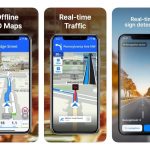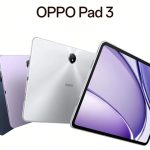- Fitness trackers do more than log workout data; they provide wearers in-depth analysis of their overall health.
- Today’s trackers offer everything from sleep and recovery tracking to advanced training feedback.
- Our top pick, the Suunto 7, is a full-featured smartwatch and fitness tracker that tracks over 70 activities.
Fitness trackers have come a long way since Fitbit introduced its first clip-on wearable in 2008. Though it was essentially a glorified pedometer, it pales in comparison to today’s wearables, which are like having a full-on personal trainer on your wrist counting your steps, tracking your burned calories, and logging your activity.
That advanced utility of modern fitness trackers allowed them to become increasingly popular, even going so far as replacing some people’s everyday watch. It makes sense, too. Why not wear a single wearable that deeply tracks your daily activity, provides insight into your health profile, and still reliably tells time?
But the real question people should ask themselves isn’t whether they should wear one but rather, which they should wear. As the fitness editor for Insider Reviews, I’ve worn the lion’s share of fitness trackers currently available, some good, some bad, and others that have managed to be both.
This means I’ve spent years learning everything about modern fitness trackers, all in the name of finding those worth owning. To help you figure out which best fits your personal activity style and fitness preference, I’ve compiled the following guide of the best fitness trackers I’ve tested in 2021.
At the end of this guide, you’ll also find some insight into what to keep in mind while shopping, as well as how I tested each of the trackers featured.
Here are the best fitness trackers:
- Best overall: Suunto 7
- Best multisport: Coros Apex
- Best Fitbit: Fitbit Versa 3
- Best fitness smartwatch: Apple Watch Series 6
- Best on a budget: Garmin Forerunner 35
- Best basic tracker: Fitbit Charge 4
- Best for recommended workouts: Garmin Forerunner 745
Amazon; Alyssa Powell/Insider
Each of the fitness trackers included in this guide went through a series of tests to determine how well they performed across these four categories: Fit & comfort, tracking accuracy, added features, and value. Here’s how we considered each category while testing:
Fit & comfort: If a fitness tracker isn’t comfortable or doesn’t fit well, you’ll be far less likely to want to wear it very often — and if you don’t wear it often, what’s the point? Tracker manufacturers also know this, for the most part, so many of the best active wearables feature bands that not only stay comfortable for long periods of time but don’t chafe or become bothersome while you sweat. When testing, I looked at everything from how they felt the moment we put them on to whether we noticed any discomfort throughout short and long workout sessions.
Tracking accuracy: Testing a fitness tracker’s accuracy isn’t always straightforward; you can literally wear two different watches and get different GPS readings, pace readings, and so on. So, instead of using a second tracker to test a wearable’s accuracy, I would map out how far an exact mile was from my house before running it a few times wearing the same watch. The trackers that ultimately made the cut all produced results that were within no more than .1 miles off.
Added features: Testing for this category was straightforward: Did the tracker have any supplemental features outside of just tracking steps, calories burned, or heart rate? This could be anything from extra activities it’s capable of logging, the ability to act like a smartwatch and get smartphone notifications, etc. This wasn’t a dealbreaker category, however, as trackers aren’t defined by their added features — but it is still a nice touch and something that can separate a good tracker from a great one.
Value: The value of a fitness tracker isn’t just its sticker price but also how valuable it is from a function standpoint to the user. Does it have the features you need? Will it track and compile the data you want it to? Can it actually serve as something that benefits your fitness as opposed to detracting from it? These are all questions you want to consider when shopping to find a tracker’s true value. This becomes more of a subjective category when viewed that way but when testing, I still was able to judge how well the tracker’s held up across each of the above categories — and still considered how much they cost, as well.
The best fitness tracker overall
Rick Stella/Business
The Suunto 7 is a robust fitness tracker that offers support for more than 70 activities, has basic smartwatch features, and provides highly useful workout feedback.
Pros: Activity tracking for over 70 activities, including everything from running and cycling to snowboarding and hiking, in-depth fitness tracking, offers workout feedback, accurate GPS, lets you download maps for offline use
Cons: App experience is clunky, expensive
Though Suunto isn’t the first name to come to mind when talking about fitness trackers, its 7 smartwatch slash tracker is one of the most impressive wearables I’ve ever tested. Suunto only released the 7 in 2020 but it’s spent almost that entire time on my wrist (when I’m not testing other trackers for this guide), and routinely impresses me and provides exactly what I want out of a fitness tracker: in-depth feedback, accurate activity tracking, and a wide variety of use cases.
Not only am I able to track any run or bike ride I go on, but it also offers support for other activities like snowboarding, hiking, swimming, or even just walking (among literally so many others). The user’s manual states that it covers more than 70 activities, but do take that with a grain of salt; some of the activities it tracks just account for length of activity and your heart rate. That means it’s not actually tracking advanced stats for things like tennis or basketball.
Even if you aren’t a multisport athlete, the 7 still offers plenty to take advantage of. Its GPS function (even one year later) is highly accurate and reliable, both while I run through my neighborhood in Brooklyn or bike longer distances across the entire NYC area. It offers offline map support for those who like to ditch their smartphone and head into the backcountry (and make it out safe) and also has smartwatch capability by offering smartphone notification support.
And although its price tag may shock at first glance ($400 is a lot to spend on a mere wearable), it more than makes up for that investment with everything it offers. Because it can be utilized and benefited from by such a wide range of active users makes it one of the most versatile fitness trackers available — and one I plan on continuing to wear for many years.
The best multisport fitness tracker
Coros
The Apex from Coros is a multisport athlete’s dream: It offers in-depth support for a range of activities, it has excellent battery life and a comfortable fit that almost makes you forget you’re wearing it.
Pros: Long battery life, even while using GPS, multisport functionality that goes beyond just tracking heart rate, comfortable design, great app experience, perfect for triathletes, built-in GPS
Cons: The screen can be too dim at times, easy to accidentally press the dials to change modes
If you spend much of your active time doing something different from the day before, then the Coros Apex is the fitness tracker you need. It’s especially adept at tracking running, biking, and swimming, making it perfect for the budding or seasoned triathlete.
But that’s not only who the Apex is for; Coros consistently updates the watch’s software to add new activities and modes, including sports like snowboarding, gym cardio, and hiking. This only adds to its versatility and the newly added modes do a good job of being accessible and easy to use as soon as they’re available.
The Apex truly proves its worth for ultrarunners. Thanks to excellent battery life, highly accurate GPS, and a dedicated trail running mode, it’s the watch a grab for when I know I’m going to be out for a long run that won’t just consist of running on the sidewalk or through my local park. Its comfortable design makes it easy to wear for long periods of time, too, without irritating my wrist or becoming a drag on my running form.
Though these are its high points, the Apex does also offer basic fitness tracking capability in the form of heart rate, steps, calories, and so on, so it’s not just for advanced athletes. Rather, it’s great for anyone looking to spend more time running, biking, or cycling, and who has an inclination to try new activities.
Its $300 price point puts it solidly in the middle in terms of other watches featured in this guide but its incredible capability makes it highly worth the expense.
The best Fitbit fitness tracker
Fitbit
Fitbit’s Versa 3 combines the brand’s excellent fitness tracking tech with in-depth smartwatch capability, unique sleep tracking, and a clean design reminiscent of the Apple Watch
Pros: Automatic activity tracking, built-in GPS, in-depth sleep tracking and exercise data, great battery life, offers unique mindful minutes feature, and is water-resistant up to 50 meters
Cons: Doesn’t always automatically sync
Fitbit’s line of Versa watches ushered in the brand’s first foray into smartwatch territory, and the resulting products (from the original Versa to today’s Versa 3) have been a triumph. Each combines the in-depth and reliable fitness tracking Fitbit’s built its name on with functional smartwatch features and a clean, stylish (and recognizable) design.
Not only is the Versa 3 the latest in this new-ish product category for Fitbit, but it’s also the brand’s best. It has built-in (and accurate) GPS, is water-resistant up to 50 meters, and offers excellent battery life, meaning you won’t have to worry about throwing it on its charger each night.
That last part is an important distinction, too, as the Versa 3 provides wearers with in-depth sleep tracking, including how much REM sleep you get, how much you toss and turn, and when you’re sleeping lightly. During my tests, I was amazed at how tumultuous my night of sleep can be — and the data allowed me to try to fix certain things about how I sleep, or when to start winding down to give myself the best chance for solid rest. Though this is starting to pop up on more fitness trackers today, I’ve found the Versa 3 to provide one of the better, more insightful experiences.
From a tracking perspective, the Versa 3 shines. I really enjoyed the automatic tracking function, which allowed me to immediately start running after I put my shoes on instead of navigating a menu just to hit Start. This may seem a minor feature but I ended up using it far more than I thought I would.
The other major component of the Versa 3 is its smartwatch capability. Though the features won’t blow you away, I found that it did still function exactly as I needed, providing me quick glances at notifications without having to pull my phone out of my pocket (or locate it in my apartment). Android users get more features, like voice-to-text responses, but it still functioned well, albeit quite basic, with my iPhone.
The best fitness tracker smartwatch
Lisa Eadicicco/Business Insider
The latest Apple Watch (the Series 6) continues the tech company’s dominance in the smartwatch space, offering wearers a versatile fitness tracker that’s full-featured, easy to use, and incredibly powerful.
Pros: Wide range of accurate activity tracking, clean, stylish design, great for iPhone users, easy-to-read always-on touchscreen display, music integration
Cons: Battery life isn’t that great (you’ll be recharging it almost every day)
You can’t have a guide to the best fitness trackers without the appearance of the Apple Watch — it’s that good. And aside from its quality, the Apple Watch is also one of the most important fitness wearables thanks to its ability to seamlessly blend fitness tracking and smartwatch capability. Other trackers in this guide offer something similar but Apple’s wearable is by far and away the best to do it.
From a fitness tracking perspective, it has a deep offering of trackable activities but excels with your basics like running, swimming, and cycling. There’s even a Nike version of the watch that comes with the Nike Run Club app pre-installed, so you know Apple intends for this to be on the wrist of a runner.
It works really well in practice, too. The watch was always quite comfortable on my wrist, even on longer runs or bike rides, and the screen is really easy to read mid-activity. Its GPS isn’t as quick as the Suunto 7 but it wasn’t as fussy as my experience with Fitbit’s Charge 4. When it does finally sync, it’s quite accurate and routinely produced that same accuracy over days and weeks of testing.
The Series 6 is rounded out by both its smartwatch offerings and advanced health analytics. There’s sleep tracking, a blood oxygen sensor, an ECG reader, and even handwash tracking. I didn’t find myself using everything all the time but it was nice knowing I had access to some of the more in-depth features whenever I wanted. Being able to respond to text messages and use it as a true smartwatch made it that much more valuable to me (especially as an iPhone user).
The best budgt fitness tracker
Garmin
The Forerunner 35 utilizes so much of what makes Garmin one of the best fitness tracker brands on the market, including accurate GPS, reliable activity tracking, and a sleek, comfortable design.
Pros: Great battery life, plenty of functionality despite its basic design, lightweight, waterproof, built-in GPS
Cons: No swimming mode despite its waterproof design, GPS signal can be slow to lock on
Often when you see the words “budget” and “fitness tracker” next to each other, you find a wearable offering the most basic of function and tracking capability. Then there’s the Garmin Forerunner 35. Though vanilla in design, the Forerunner 35 is anything but “budget” in what it offers yet still has a very reasonable price tag of less than $100.
If you’ve ever used a Garmin fitness tracker or smartwatch before, you know just how capable its ecosystem is — and the 35, though inexpensive, is no different. It features 24/7 heart rate monitoring, accurate GPS tracking, and compatibility with running and cycling (among a few others).
What I liked best about the 35 during my tests was its attention to running features that more expensive watches just don’t have, specifically its running cadence analysis and an interval training mode. With the run cadence feature, I was able to have a more in-depth look into my mechanics and could make more informed adjustments. For advanced runners, this data is invaluable.
Navigation-wise, the Forerunner 35 is a breeze. Just a few buttons flank the bezel, each of which is straightforward in allowing you to access the watch’s suite of features. It won’t wow you in terms of design but this is one of the best bang-for-buck fitness trackers on the market.
The best basic fitness tracker
Fitbit
If exercising is part of your routine, you’ll love being able to track your workout in real-time on the bright, easy-to-read screen of the Fitbit Charge 4.
Pros: Comfortable design, easy to read display, built-in heart rate monitor, in-depth sleep tracking, advanced workout features, real-time workout tracking on-screen, long battery life, user-friendly app
Cons: No music storage, basic black & white display
The Fitbit Charge 4 is the successor to the Fitbit Charge 3 (our previous recommendation as the best fitness tracker for workouts), with a handful of features that set it apart from past versions.
Specifically, it now features a built-in GPS. I did find the GPS to not be as accurate as others in this guide (even its Fitbit kin, the Versa 3) but it did function well enough that it’s worth having on the watch.
In addition to counting steps like any good fitness tracker should, the Charge 4 also measures stairs climbed, calories burned, resting, and active heart rate, and offers in-depth sleep tracking. It even shows which type of sleep you’re in, be it light, deep, or REM. You can also see how your habits stack up against those of other people your age via the app.
If you’re feeling stressed, this tracker also offers breathing exercises to help you relax. And, diving into more of the workout features, the Charge 4 has dedicated functions for recording a wide range of activities, including running, cycling, cardio, and strength training. There’s even a timer option for HIIT (High-Intensity Interval Training). It also lets you pause and resume workouts, and if you do forget to tell it you’re starting an activity or workout it can automatically detect a session and start monitoring it.
The best fitness tracker for recommended workouts
Adam Molina/Insider
The Forerunner 745 is the perfect representation of the power of Garmin’s ecosystem, offering wearers fine-tuned workout recommendations and valuable fitness insight in an easy-to-use package.
Pros: Huge variety of trackable activities, built-in pulse oximeter, and accurate heart-rate monitor, motivating recommended workouts and detailed accuracy as you wear it more, offers valuable fitness insight, excellent battery life
Cons: The menu system can be clunky, expensive
Garmin’s long-made highly advanced fitness trackers that have always done well to satiate the needs of hardcore athletes. With the Forerunner 745, it brings that in-depth approach to a wider audience, providing highly valuable fitness insight and feedback to anyone, regardless of how active they are.
The beauty of this watch rests with the advanced data it provides. During workouts, the 745 displays everything from time active and heart rate to distance covered and pace. Each of which is highly useful in the moment if you’re interval training or aiming for a certain time on a run or bike ride. It’s also quite easy to customize this screen so you have exactly what you want when you want it.
Though that in-the-moment date is great, it’s what the watch offers after the activity (or between workouts) that’s even better. This includes challenging workout recommendations that adapt to your output, the ideal amount of rest you need between activities (which is highly important), and customized training plans. Neither of these is just tacked-on, too, and I found myself gravitating toward them more and more as I tested the watch even though I’ve always preferred my own workouts to anything pre-written for me.
Its tracking accuracy is also highly precise, and I found it to be similar to that of Suunto’s 7 and the Apple Watch Series 6. It syncs with GPS rather quickly and would consistently produce very similar metrics (both in terms of distance and pace) no matter if I was cycling or running.
If there was something to nitpick about the Forerunner 745, it’d be its clunky menu system. Like most Garmin watches, the OS isn’t exactly intuitive, though it does get easier the more you use it (as would anything). It’s not enough to be a dealbreaker, especially considering how much else this watch does that’s superior to most fitness trackers currently available.
How to shop for a fitness tracker
Those looking for a device dedicated to tracking daily activity, workouts, and sleep have a vast number of choices even without including members of the smartwatch family. To help you decide on the best fitness tracker for your needs, there are a few things to take into consideration:
Comfort and design: Since you’ll wear the tracker daily (even to bed for sleep tracking), comfort is a high priority. If it’s not comfortable, you won’t want to wear it; plain and simple. The same goes for design. If you have a small wrist, you may want a tracker with a sleek, understated look. Fitness trackers come in all shapes and sizes, so you’ll be able to find one that suits your style.
Features: Not all fitness trackers are created equal when it comes to features. If you’re looking for a no-frills fitness tracker, then one that only tracks steps and your sleep habits may suffice. However, if you work out often or want insight into how your activity impacts your overall health, a more advanced tracker with a heart rate monitor or built-in GPS may be the one for you.
You should also consider the types of workouts you like to do. For example, if you’re a swimmer, waterproofing is a must. Just starting out on your fitness journey? A device that coaches you and gives you goals to work towards may provide the extra motivation you need to stay on track.
App experience: Most fitness trackers are designed to work in tandem with your smartphone, syncing the data collected with a downloaded application. This allows you to gain even more insight into your health and save the information collected to track your progress over time.
Unfortunately, not all companion apps are that effective and you may find there are some experiences you prefer over others. It’s important to choose a fitness tracker that gives you a good app experience. Easy navigation and compatibility with your phone’s operating system are a must.
The best deals on fitness trackers from this guide
Fitness trackers help you keep track of your body’s activities — from sleep to intense workouts. Depending on your specific needs, a good tracker can cost you over $150; luckily, we see discounts for them all of the time.
Here are the best deals on our favorite fitness trackers:
Read more about how the Insider Reviews team evaluates deals and why you should trust us.
Powered by WPeMatico






